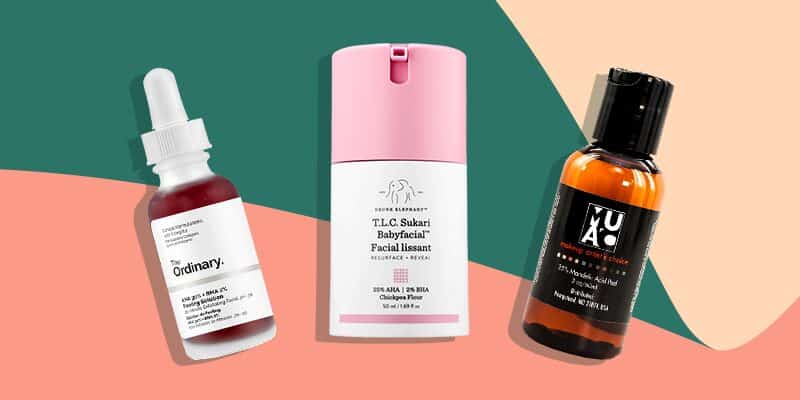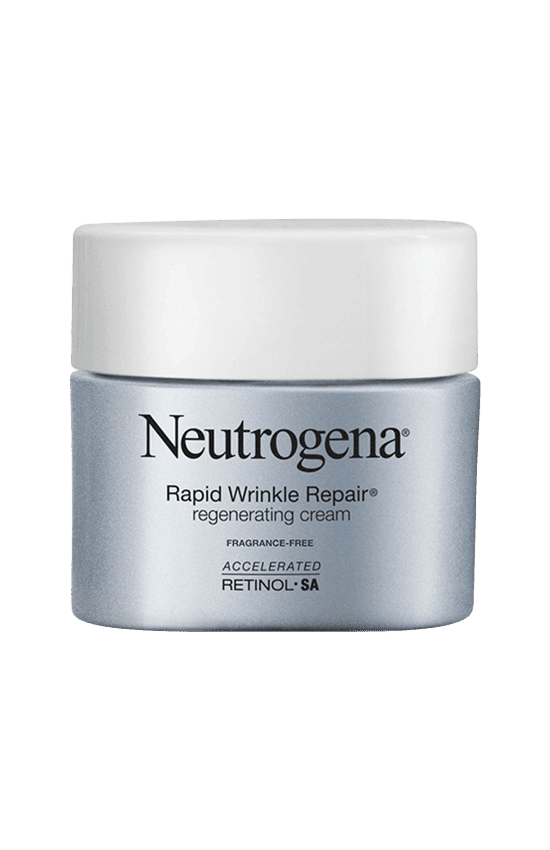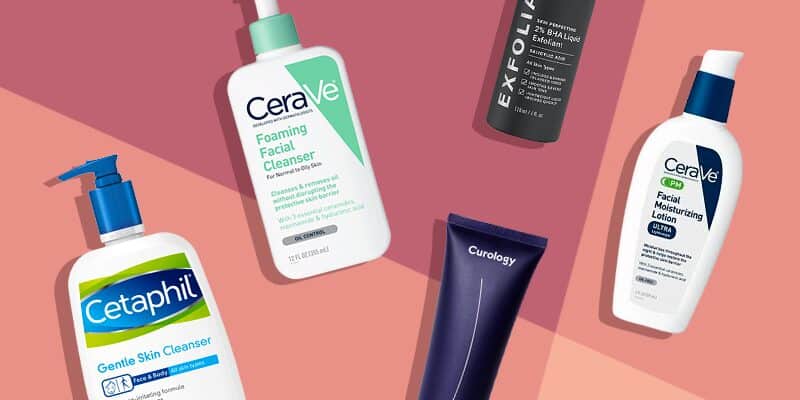Chemical peels have been proven to help reduce the appearance of acne scars, but there are a variety of treatments available, as well as multiple variables to keep in mind.
Read on to learn more about these treatments in general, as well as the best chemical peels for acne scars.
What Type of Acne Scarring Will Chemical Peels Help?
Chemical peels are incredibly effective when it comes to improving the overall appearance of the skin. However, they work better on certain types of acne scars over others.
“Generally, chemical peels do not address the deeper types of scars, such as ice pick scars,” says Dr. Anna Guanche, a board-certified dermatologist based in Calabasas, CA.
Hypertrophic (or raised) scars also aren’t suitable for chemical peels. That being said, those with less severe atrophic scars or hyperpigmentation may find success with chemical peels.
Atrophic Scarring
Atrophic scars occur when there is a loss of tissue, resulting in an indent in the skin.
- Ice pick, boxcar, and rolling scars are all types of atrophic scars.
- Boxcar scars have defined borders and a flat bottom surface, whereas rolling scars don’t have clearly defined borders.
- Ice pick scars are small but noticeable holes in the skin. Most often, atrophic scars don’t fade on their own.
Chemical peels help diminish the appearance of boxcar scars and rolling scars, but likely won’t be effective on ice pick scars (pitted acne scars).
Post-Inflammatory Hyperpigmentation
Many people with acne-prone skin deal with post-inflammatory hyperpigmentation.
- This type of hyperpigmentation visually appears as a dark, flat spot on the skin where inflammation existed (often a pimple).
- While mild to moderate spots typically clear up on their own within 4 to 24 months, chemical peels help speed up the process.
Other types of hyperpigmentation, like melasma and sun spots, are also treatable with chemical peels.
Best Chemical Peels for Acne Scars (At Home)
If you are looking for an effective treatment to do at home, these are some of the best chemical peels for acne scars.
1. The Ordinary AHA 30% + BHA 2% Peeling Solution
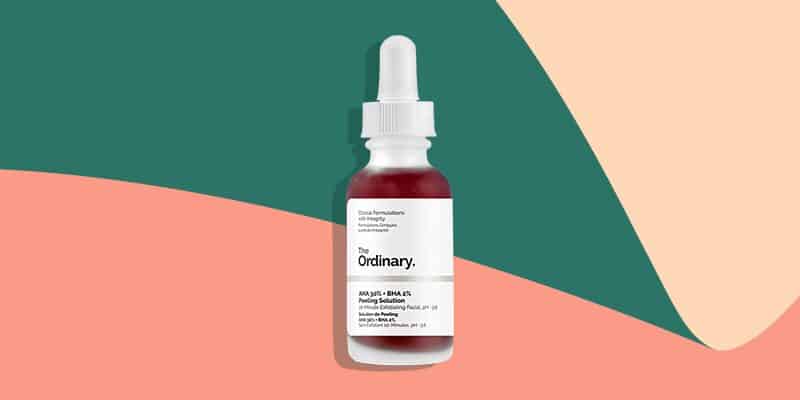
Best Chemical Peel for Atrophic Acne Scars
This chemical peel from The Ordinary is potent and effective, and the low price point makes it one of the best chemical peels for acne scars for those on a budget. The formula contains a powerful 30% concentration of exfoliating glycolic and lactic acid, as well as a 2% concentration of salicylic acid. In addition to the acids, the solution contains Tasmanian Pepperberry, which reduces irritation, as well as vitamin B5 to assist with healing.
How to Use: Apply to clean and dry skin. Leave on for up to 10 minute, and then rinse it off. Use at night, and use no more than twice a week.
2. Drunk Elephant TLC Sukari Babyfacial Mask
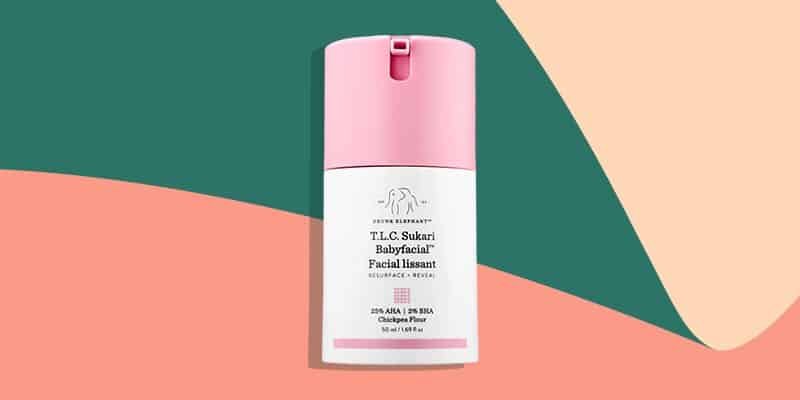
Best Chemical Peel for Hyperpigmentation
This mask has a strong 25% concentration of an AHA blend that includes glycolic, lactic, tartaric, and citric acid. It also has a 2% concentration of salicylic acid. These acids work together to resurface the skin, revealing a smooth surface and an even skin tone. Drunk Elephant’s mask also contains a variety of plant extracts that calm the skin. The formula is free of essential oils, silicones, and fragrances, and is vegan and cruelty-free.
How to Use: Cleanse and dry the skin. Apply an even layer all over the skin, and then leave it on for up to 20 minutes. Rinse the product thoroughly when done. Use once weekly.
3. Makeup Artist's Choice 40% Lactic Acid Peel
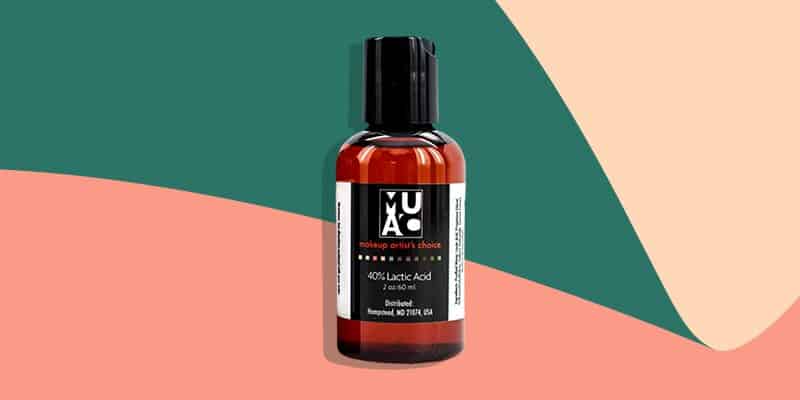
Best for Acne Scars and Discoloration
Lactic acid is an alpha-hydroxy acid that is less irritating than the popular glycolic acid. This chemical peel has a 40% concentration of lactic acid. The potent formula is excellent for treating acne scars and improving the overall tone and texture of the skin. It also contains licorice extract, a skin lightening ingredient. This chemical peel kit comes with a pH prep solution, which removes debris and prepares the skin for the peel.
How to Use: Cleanse and dry the skin. Dispense the pH Prep Solution on a cotton ball, and sweep it across the face. Apply a thin layer of the peeling serum over the skin. Leave on for 3 to 10 minutes. Rinse with warm water and cleanse the skin again. Use once a week.
4. Makeup Artist’s Choice 25% Mandelic Acid Peel
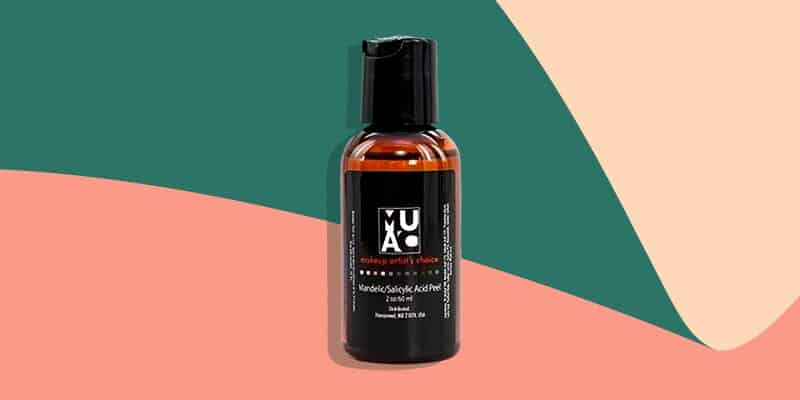
Best Chemical Peel for Minor Acne Scarring
This peel from Makeup Artist’s Choice uses mandelic acid, another AHA that is even less irritating than lactic acid. Mandelic acid has a larger molecular structure, which means it takes longer to penetrate the skin’s surface, leading to less irritation. That said, this peel still exfoliates the skin to diminish scars and improve the appearance of the skin. Mandelic acid doesn’t cause skin lightening, so this is one of the best chemical peels for acne scars for those with darker skin tones.
How to Use: Cleanse and dry the skin. Apply a thin layer of the peeling serum all over the skin. Leave on for 3 to 5 minutes. Rinse thoroughly with warm water. Use once a week for the first 2 weeks, then every 4 days.
5. Makeup Artist’s Choice Mandelic/Salicylic Peel
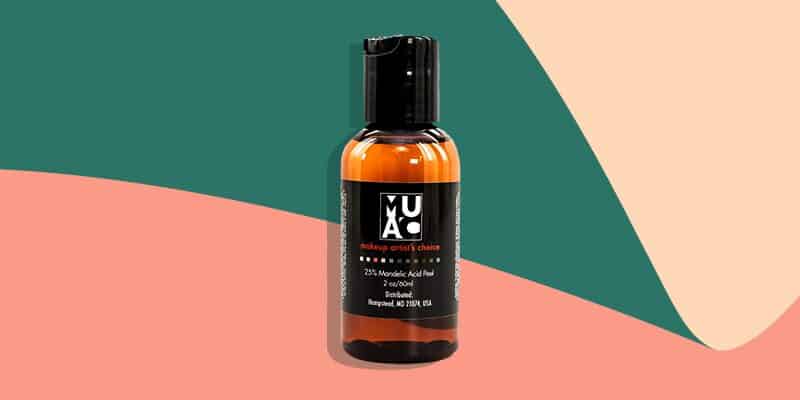
Best Chemical Peel for Acne and Scarring
The combination of 15% mandelic acid and 15% salicylic acid makes this chemical peel particularly effective for those dealing with both scars and clogged pores. Salicylic acid works deep in the pores to unclog debris, while mandelic acid works on the surface to reveal even and smooth skin. These chemical exfoliants work particularly well on post-inflammatory hyperpigmentation.
How to Use: Cleanse and dry the skin. Apply a thin layer of the peeling serum all over the skin. Leave on for 3 to 5 minutes. Rinse thoroughly with warm water. Use once a week.
How to Use Chemical Peels at Home (Safety)
At home chemical peels aren’t as strong as professional treatments, but you should still be cautious when using them. And, at-home peels are great for continual skin maintenance, says Angie Seelal, Physician's Assistant at Advanced Dermatology PC.
There are a few things to keep in mind when using chemical peels for acne scars at home.
Chemical Peel Safety Measures
- You should not do a chemical peel if you are on isotretinoin (Accutane).
- If you have inflamed skin, you should also avoid doing a chemical peel until the inflammation has resolved.
- Eliminate exfoliants and any drying products 3 days before using a chemical peel.
- This means avoiding manual exfoliators, as well as retinol, benzoyl peroxide, acne treatments, and any other strong topicals that may dry or irritate the skin.
Patch Test Your Chemical Peel
Prior to using a peel, you should do a patch test to see how your skin reacts.
- Apply a small amount of the peel on clean skin in a discrete area, like on the inside of your arm or under your ear along the jawline.
- Leave on for the amount of time listed on the instructions, and then wash off. After 48 hours, look for signs of a reaction, like a rash, redness, bumps, or itchiness.
- If you experience an adverse reaction, it is best to avoid using the product.
While doing the peel, follow the instructions closely. If you experience intense stinging or burning, wash off immediately.
After the peel, follow up with a moisturizer. Continue to avoid using exfoliants and drying products at least 24 hours after the treatment.
Best Chemical Peels for Acne Scars (Professional)
There are a variety of professional peels at different strength levels. “The deeper the peel penetrates the more likely it is to correct indented scars, whereas shallow peels can clear up active acne and pigmentation that is associated with it,” says Dr. Guanche. For professional options, these are the best chemical peels for acne scars.
1. Jessner Peel
A Jessner peel contains lactic acid, salicylic acid, and resorcinol, and can be a superficial or medium level peel. It has been proven to be an effective treatment for acne scars, even when used as a superficial peel. “This peel not only addresses pigmentation and fine lines but can also help to clear acne,” says Dr. Guanche.
2. TCA Peel
A trichloroacetic acid (TCA) peel is a more aggressive medium strength professional peel option. “This peel penetrates deeper into the skin, and has much more visible downtime compared to the Jessners peel,” says Dr. Guanche.
3. 60% Glycolic Acid Peel
As the name suggests, this peel uses a 60% concentration of glycolic acid to deeply exfoliate the skin. While you can buy a medical-grade peel with this concentration online, it is not safe to do at home. “Your skin reacts to peels differently depending on what state it is in, so [it is] best to have a professional board-certified dermatologist and their team take care of you” says Dr. Guanche.
Summary: Best Chemical Peels for Acne Scars
- The Ordinary AHA 30% + BHA 2% (Atrophic Acne Scars)
- Drunk Elephant TLC Sukari Babyfacial Mask (Hyperpigmentation)
- Makeup Artist's Choice 40% Lactic Acid Peel (Discoloration)
- Makeup Artist’s Choice 25% Mandelic Acid Peel (Minor Acne Scarring)
- Makeup Artist’s Choice 15% Mandelic/Salicylic Peel (Acne and Acne Scars)
FAQs
How much does a chemical peel cost?
The price of a chemical peel will vary based on location, peeling depth and the service provider cost. Chemical peels done by estheticians will be significantly cheaper then those done by dermatologist or plastic surgeons. For ball park numbers, they can range $60 to over $1000 per session. For the best price, call your local provider and ask them for a quote.
Do chemical peels help with acne scarring?
Chemical peels have been proven to help with post-inflammatory hyperpigmentation and atrophic (pitted) scars. At-home treatments may help milder acne scars, and medical-grade peels done at a dermatologist’s office will help deeper scars. Those with hypertrophic (raised) or more severe atrophic scars likely won’t see results with chemical peels, says Angie Seelal.
Can chemical peels make acne scars worse?
There are risk factors associated with chemical peels. It is possible for chemical peels to make acne scars worse, or to cause new scars to form. This is especially true when using medical-grade peels at home, using a peel on inflamed skin, or when not closely following the directions of a treatment.
Can you see results after one peel?
Results depend on the severity of scars and how deep the peel is. Typically, chemical peels require multiple treatments to see the best results. “In general, chemical peels for acne scars require a series of treatments,” says Dr. Guanche. “It is not a one-and-done treatment.”
The Bottom Line
If you are dealing with atrophic scars or post-inflammatory hyperpigmentation, chemical peels may help you reduce their appearance and even out your skin tone. When using one of the best chemical peels for acne scars, take all necessary precautions for the safety of your skin, and follow the directions closely.
